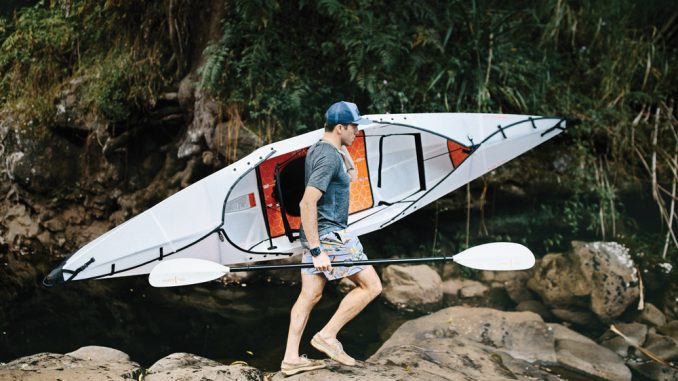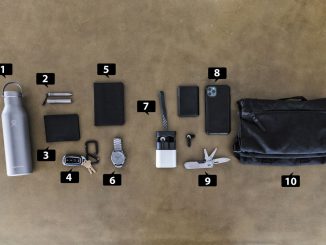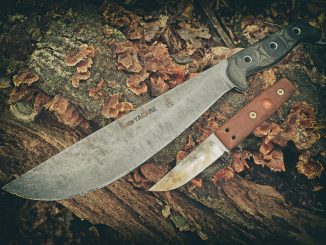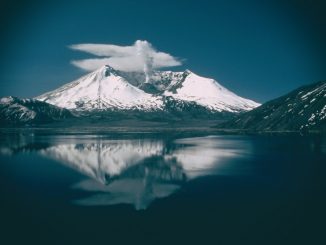
“The Oru Kayak folds out of a compact box—easily, quickly, and almost magically.”
That was the promotional line that appeared on Kickstarter back in 2012. By lunch time on the first day of the campaign, backers had already pledged more than enough to meet the funding goal, and the company was launched.

Since then, Oru Kayak has become an international success, shipping folding kayaks worldwide. Oru Kayak produces the only origami kayaks on the market. They are designed and manufactured in the United States.
EVERY PIECE OF THE KAYAK IS CONTAINED WITHIN THE COMPACT, FOLDED BOX SHAPE, AND NO TOOLS ARE REQUIRED FOR ASSEMBLY.
Curious to see if this innovative watercraft would be suitable for use beyond casual paddling and the multiple roles required by preppers, American Survival Guide contacted Oru Kayak and arranged for a sample to be sent to my home. A few days later, a cardboard box arrived containing one of Oru Kayak’s Beach models.

The Oru Kayak Beach falls into the “recreational” category of kayak designs. Unlike whitewater-play boats or sea kayaks, this class of kayak is not specialized to perform a certain role, such as bouncing off of boulders or touring the coastline. Boats in this class are designed to do just about anything; and, while they won’t win any competitions, they are champions of versatility.
First Impressions
After removing the folded kayak from the shipping carton, my only thought was, No way this thing is a 12-foot kayak!
I still had my doubts as I unfolded the plastic hulk … until the kayak form started to take shape as I followed the assembly instructions. At the end of the transformation, a sturdy watercraft lay at my feet—the same size as my rigid molded kayak but half the weight.


The lid, which will become the floor of the kayak, comes off to reveal the folded kayak within.
Made from a single sheet of durable, corrugated polypropylene with intricate creases pressed in, the kayak hull and decks are held together with nylon straps fitted with buckles and industrial-strength snaps. Every piece of the kayak is contained within the compact, folded box shape, and no tools are required for assembly. The first time I assembled the Beach, it took about 20 minutes to complete, because I had to refer to the manual several times. But after getting the hang of it, the metamorphosis from box to kayak takes five minutes or less.

As you unfold the kayak, you’ll find it hard to believe it will become a sturdy watercraft.

As the bulkheads and floor are installed, the rigid form starts to take shape. After locking the seatback into the floor, tightening the straps and snapping the decks closed, it’s almost complete.
Oru Kayak included one of its optional paddles (which breaks down into four pieces and tucks away inside the folded kayak). The lightweight (2.55 pounds) paddle proved to be strong, easy to put together and is adjustable for length and blade offset. It was perfect for this kayak.
Floating the Boat
Stepping from the shore into the kayak, I expected to feel some flex in the hull. After all, this was a folding kayak. Instead, the bottom of the Beach felt firm as my weight transferred onto it. I eased into the seat and found it to be very comfortable. In addition, the padded seatback adjusted easily, as did the foot rest.
I TRIED TO MAKE THE BEACH ROLL TO THE POINT OF NO RETURN, EACH TIME LEANING OUT WELL BEYOND THE POINT I THOUGHT IT SHOULD FLIP, BUT IT JUST PUSHED BACK …. THE STABILITY OF THE ORU KAYAK BEACH PROVED TO BE OUTSTANDING.

The kayak is almost ready to hit the water after a few final adjustments.

The four-piece, break-down paddle adjusts for length and blade angle. Once assembled, it is very solid. In pieces, it stores inside the folded kayak box.

Stepping onto the floor of the Beach, it was impossible to tell the difference between the foldup boat and a traditional molded kayak.
On the water, the kayak performed very well. At low speed, it was very responsive to power strokes, accelerating forward, backward and turning as desired. Paddling at a sustainable pace, the kayak cruised along at 3 miles per hour (measured with my handheld GPS), and with a quick cadence, it sprinted along at about 5 miles per hour. Tracking was good, with minimal effort required to stay on course.

The Beach performed very well on the water in maneuvering, tracking, speed and stability. It was very pleasant to paddle.

The Oru Beach Kayak is exceptionally stable. Even with this much leaning, the kayak refused to tip over.

Finally finding the tipping point, the author went for a swim in 45-degree (F) water. Getting the Beach to toss him out required him to lean it a ridiculous amount. Accidental flips are very unlikely in the Oru Beach Kayak.
One area of concern for many people is stability: Kayaks have a reputation for being easy to tip over, and often, people will shy away from them for fear of falling out—or worse, being trapped upside down. While getting stuck in any capsized kayak is highly unlikely, with the size and openness of the cockpit in the Beach, it would be virtually impossible.


Loading full backpacks and other bulky gear through the hatches found on other kayaks is usually impossible. Placing them inside the front and rear compartments of the Beach during assembly was easy. Items to be accessed on the water can be placed in the spacious open area around the seat.

The Oru Beach Kayak was very comfortable to paddle, extremely stable and did everything the author asked of it— and did it well. This is a very capable and versatile watercraft.
Still, I had to find the limit of how far I could lean the Oru Kayak before it sent me swimming. I tried to make the Beach roll to the point of no return, each time leaning out well beyond the point I thought it should flip, but it just pushed back. After several attempts, I leaned so far to the side that I “fell” out, for lack of a better word. The stability of the Oru Kayak Beach proved to be outstanding.
Carrying Cargo in the Beach Kayak
The next test focused on how the boat handled with additional weight in the hull. Loading gear inside the Beach was done by placing items inside the front and rear compartments during assembly. Traditionally, kayaks have one or more hatches on the decks to access the interior, and everything has to fit through the hatch. Nevertheless, with the folding hull of the Oru Kayak, items that would normally be too large to fit went in easily.


Testing complete, it was time to fold up the Oru Beach, take it back home and consider its merits. After putting the lid on the box, the author held it upside down to drain out the small amount of water that had dripped into the boat from the paddle, tossed it in the back of his truck and closed the tailgate.
With three days’ worth of gear and supplies, including a loaded backpack and large sleeping bag inside the compartments, the Beach’s decks were snapped and cinched closed. Additional items—a small cooler, 20-liter dry bag with radio equipment, and fishing rods and a tackle box— were loaded around the seat and in front of the foot rest. The combined weight of the gear and paddler was about 250 pounds—well below the 300-pound maximum.

The folded Oru Beach Kayak fit in the front seat of the author’s Dodge Dakota—amazing!

The Oru Beach Kayak is shown resting beside the author’s Dagger Blackwater 12.5. Both are the same size, but the Beach weighs half as much as the Dagger.
With all this room for storage, it would be relatively easy to overload the Beach, so keep that in mind. Also, the front and rear compartments are not waterproof; the bulkheads that form them are there for the structural integrity of the hull and decks. Anything that must be kept dry should be placed in a dry bag or trashcan liner.
COMPACT AND STORABLE ANYWHERE; TRANSPORTABLE BY ANY MEANS; SIMPLE, FIVE-MINUTE ASSEMBLY; STRONG AND DURABLE; AMPLE STORAGE SPACE FOR GEAR AND SUPPLIES; EASY TO PADDLE, WITH GREAT HANDLING CHARACTERISTICS AND EXCELLENT STABILITY, ORU KAYAK JUST MIGHT HAVE CREATED THE PERFECT EMERGENCY WATERCRAFT.

Once the neoprene fairings are stretched into place on the bow and stern, the Beach kayak is fit to float.


It is simple and quick to align the panels and set the fasteners at the bow.
The lower center of gravity created by the added weight seemed to make the Beach handle even better than before. After paddling around the lake awhile, the boat was pulled ashore with the gear still inside, and again, no flex was detectable in the kayak.
THE ORU KAYAK BEACH IS AN ADMIRABLE AND VERSATILE WATERCRAFT; I CAN’T IMAGINE ANY TASK THIS KAYAK WOULDN’T BE CAPABLE OF.

At about half the weight of the author’s molded kayak, the Oru Beach is easy to deploy on the water.
The Oru Kayak Beach is an admirable and versatile watercraft. I can’t imagine any task this kayak wouldn’t be capable of. Keep in mind that the Beach is not intended for use in whitewater or rough surf, but it sure isn’t limited to serene summer days on the lake.

Fasteners on the Oru Beach Kayak are familiar and easy to use.

The Oru Beach Kayak’s seat is comfortable, with ample padding and an adjustable back support. Note the open storage space for small items behind the seat.
Compact and storable anywhere; transportable by any means; simple, five-minute assembly; strong and durable; ample storage space for gear and supplies; easy to paddle, with great handling characteristics and excellent stability, Oru Kayak just might have created the perfect emergency watercraft.
Oru Kayak Beach
Dimensions and Capacities
Assembled
- Length: 12 feet
- Width: 28 inches at the widest point
- Weight: 26 pounds
- Capacity: 300 pounds
Folded
- Length: 33 inches
- Width: 12 inches
- Height: 30 inches
Specifications, Materials and Construction
- Double-walled, 5mm polypropylene hull and deck with UV inhibitors
- Double-walled, 10mm polypropylene seat and bulkheads (NOTE: bulkheads are for structural rigidity only and are not watertight)
- ABS structural components
- Polypropylene and EPDM rubber trim
- Anodized aluminum reinforcing rod
- Heavy-duty nylon and neoprene rubber fairings
- Nylon and stainless steel fasteners
Features
- Refined folding design for ultra-fast assembly
- Extra-large cockpit for easy entry and exit and room for gear
- 28-inch width for increased stability
- Lightweight hull for easy paddling
- Foam seat and comfortable, fully adjustable backrest
- Easy-to-adjust footrest
- Two sets of carrying handles for effortless maneuvering on land
MSRP: $1,299
Oru Kayak Accessories
Oru Kayak carries a complete line of accessories that complement and add to the versatility of the company’s folding kayaks.
The Oru Kayak Fishing Kit includes everything needed to turn your kayak into a fish-catching machine, and the NRS (Northwest River Supplies) Safety Kit can be secured to the deck or inside the kayak to keep emergency items within reach. Complete packages include essential accessories to get your new kayak on the water quickly.
Always wear a USCG-approved personal flotation device (PFD) when you are on the water.
View the full selection of accessories at www.OruKayak.com

The Oru Kayak carbon-fiber paddle is extremely lightweight and exceptionally strong. Carbon-fiber paddles are great for long-distance paddling.

Inflatable flotation bags are made to fit in the front and rear compartments of the kayak to provide extra flotation if the boat is deployed in rough water.

The Oru Kayak Backpack allows the folded kayak to be carried comfortably in rough terrain.

The NRS Safety Kit includes items for dealing with emergencies on the water.

Oru Kayak has assembled packages that contain everything you need to get your new boat on the water.

The Oru Kayak Fishing Kit is available as an accessory.
SOURCE
Oru Kayak, Inc.
(415) 630-3717
www.OruKayak.com
Editor’s note: A version of this article first appeared in the April, 2018 print issue of American Survival Guide.





Be the first to comment